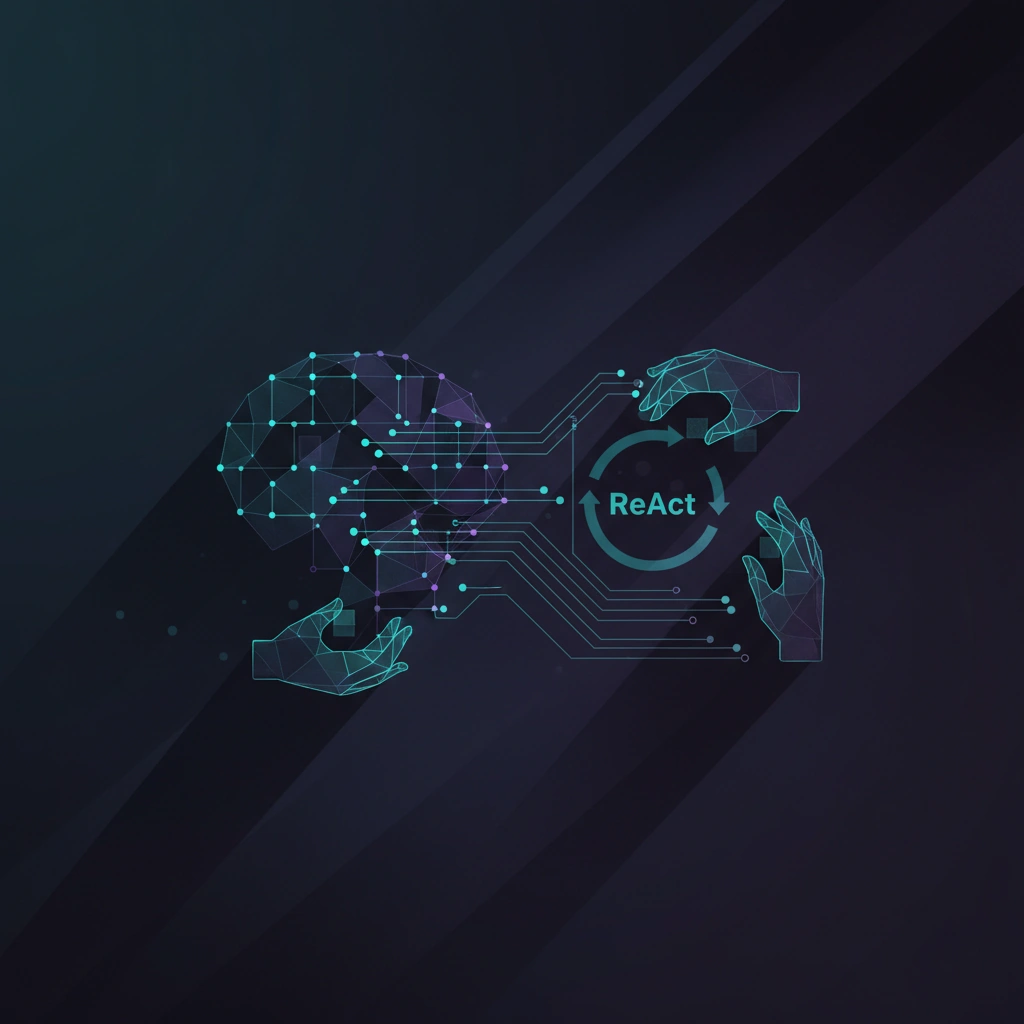Building ReAct Agents with LangGraph: A Technical Guide
Learn how to build ReAct (Reasoning and Acting) agents using LangGraph, exploring the architecture that enables AI systems to reason about tasks and execute actions autonomously through iterative cycles.

The evolution of agentic AI systems represents a significant shift in how autonomous systems reason and act. LangGraph, a framework built on top of LangChain, provides developers with the tools to construct sophisticated agent architectures, including the powerful ReAct (Reasoning and Acting) pattern that enables AI systems to iteratively reason about tasks and execute actions.
Understanding the ReAct Architecture
The ReAct framework combines reasoning and acting in a synergistic loop where AI agents alternate between thinking about problems and taking concrete actions to solve them. This approach differs fundamentally from traditional chain-of-thought prompting by interleaving reasoning traces with action execution, allowing agents to adapt their strategies based on environmental feedback.
In the ReAct paradigm, agents follow a cyclical process: they observe the current state, reason about what action to take next, execute that action, observe the results, and continue iterating until reaching a satisfactory conclusion. This cycle mirrors human problem-solving approaches, making the system's decision-making more interpretable and robust.
LangGraph's Architectural Advantages
LangGraph introduces a graph-based approach to building agentic systems, where nodes represent computational steps and edges define the flow of control and data. This architecture provides several key benefits over linear agent implementations. The framework supports conditional branching, parallel execution paths, and stateful operations that persist across agent iterations.
The graph structure allows developers to define explicit state machines for their agents, making the reasoning process transparent and debuggable. Each node in the graph can perform specific functions—whether calling language models, executing tool functions, or processing intermediate results—while maintaining a coherent state throughout the agent's operation.
Implementation Components
Building a ReAct agent with LangGraph involves several core components. First, developers define the agent's state schema, which specifies what information the agent tracks across its reasoning cycles. This typically includes the conversation history, intermediate reasoning steps, tool outputs, and any task-specific data structures.
Next, tool integration becomes critical. The agent needs access to external functions it can call during its reasoning process—whether these are search APIs, calculation tools, database queries, or custom functions. LangGraph provides a clean interface for defining these tools and making them available to the agent's reasoning engine.
The reasoning node itself leverages language models to analyze the current state and determine next actions. Prompt engineering plays a crucial role here, as the system prompt must instruct the model on how to format its reasoning, when to call tools, and how to recognize task completion.
Execution Flow and Control
The execution flow in a LangGraph ReAct agent follows a deterministic graph structure. After the reasoning node produces a decision, conditional edges route execution based on that decision. If the agent decides to use a tool, execution routes to the tool execution node. If it determines the task is complete, the graph terminates and returns the final result.
This explicit control flow contrasts with implicit agent frameworks where the execution path emerges from repeated LLM calls. LangGraph's approach provides better control over agent behavior, easier debugging, and clearer visibility into decision-making processes.
State Management and Memory
Effective state management differentiates robust agent implementations from brittle ones. LangGraph maintains a persistent state object that flows through the graph, accumulating information from each node. This stateful approach enables agents to build context over multiple reasoning iterations and maintain coherent long-term behavior.
The framework supports state updates through reducer functions, allowing fine-grained control over how new information integrates with existing state. This becomes particularly important when handling multi-step reasoning tasks where intermediate results inform subsequent actions.
Practical Applications and Considerations
ReAct agents built with LangGraph excel in scenarios requiring multi-step reasoning with tool usage. Research tasks, data analysis workflows, and complex question-answering systems benefit from this architecture. The agents can break down complex problems, gather information through tools, and synthesize findings into coherent responses.
However, developers must consider token costs, latency, and error handling. Each reasoning cycle consumes tokens and adds latency. Implementing proper error boundaries, retry logic, and fallback mechanisms ensures agents handle tool failures and unexpected states gracefully. Monitoring agent behavior through structured logging helps identify optimization opportunities and debugging issues in production deployments.
Stay informed on AI video and digital authenticity. Follow Skrew AI News.



